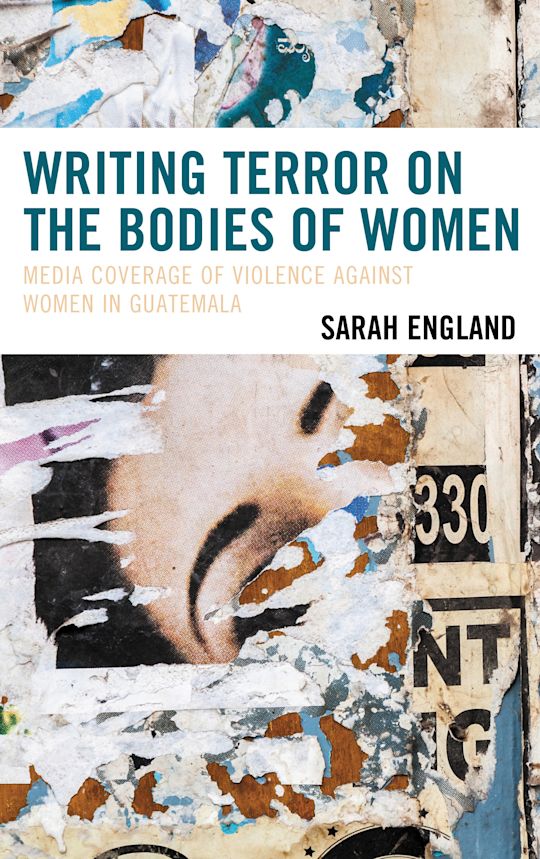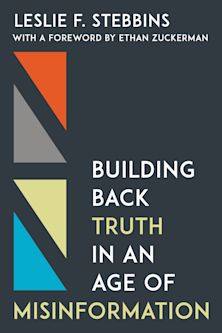- Home
- ACADEMIC
- Film & Media
- Journalism
- Writing Terror on the Bodies of Women
Writing Terror on the Bodies of Women
Media Coverage of Violence against Women in Guatemala
Writing Terror on the Bodies of Women
Media Coverage of Violence against Women in Guatemala
You must sign in to add this item to your wishlist. Please sign in or create an account
Description
Writing Terror on the Bodies of Women: Media Coverage of Violence against Women in Guatemala analyzes the scope and dynamics of violence against women in Guatemala and how it is represented in the print media. Using nearly two thousand Guatemalan newspaper reports covering murders and assaults on women, this book contextualizes violence against women within the history of violence in Guatemala; gender ideologies and patriarchal social structures; and the contemporary demands of the women’s movement for social and legislative change. It shows that while some newspapers cover violence against women with investigative reports and editorials that use feminist analysis and language, these are overshadowed by the large number of individual reports that reproduce narratives of terror and conceal the gendered nature of violence against women by suggesting that “delinquents,” “gangs,” “unknown men,” and inexplicably violent husbands are the main culprits, while simultaneously upholding dichotomous gendered narratives of “good” and “bad” wives and daughters.
Table of Contents
List of Organizations and Acronyms
List of Tables
Part I. Framing the Problem
Chapter 1. Introduction
Chapter 2. Violence against Women and the Media: Theory and Methods
Part II. The Specter of Gendered Terrorism: A History of Violence and Violence against Women in Guatemala
Chapter 3. A Good Place to Commit Murder: A History of Violence in Guatemala
Chapter 4. The War against Women: A History of Violence against Women in Guatemala
Chapter 5. The Growth of the Women's Movement and Challenges to the Patriarchal State
Part III. Talk of Crime and Narratives of Terror Written on Women's Bodies: Blaming Gangs and Delinquents
Chapter 6. Visible Violence, Invisible Assassins: "Necrographic Maps" and Terror in Guatemalan Murder Reports
Chapter 7. “Easy Targets,” “Cannon Fodder,” and “The Wrong Crowd”: Framing Women as Innocent or Guilty Victims of Gangs and Delinquents
Part IV. Blaming the Patriarchal Family and State
Chapter 8. “Violence lies in wait for women at home:
Product details
| Published | 15 Aug 2018 |
|---|---|
| Format | Ebook (Epub & Mobi) |
| Edition | 1st |
| Extent | 434 |
| ISBN | 9781498530804 |
| Imprint | Lexington Books |
| Illustrations | 13 tables; 7 charts; |
| Series | Latin American Gender and Sexualities |
| Publisher | Bloomsbury Publishing |
About the contributors
Reviews
-
In Writing Terror on the Bodies of Women: Media Coverage of Violence against Women in Guatemala, Sarah England gives us rare insight into how gender based violence works in practice. Through an exhaustive and detailed analysis of the biases that undergird how women, violence, and the state are represented in sensationalist and conservative newspapers, Writing Terror on the Bodies of Women dissects the role of the media in the country’s infamous femicide problem. Importantly, England’s work complicates narratives that assume a violent nature is inherent in Guatemalan culture by demonstrating how feminist representations of women co-exist with a regular spectacle of violent men and violated women circulated in the media.
M. Gabriela Torres, Wheaton College
-
England’s meticulous analysis of media portrayals of gender violence offers us a treasure trove of information and a critical angle essential for understanding how various forms of violence seep through the lives of Guatemalan women. I cannot overstate the importance and timeliness of this carefully crafted book. Hands down, a major contribution and highly recommended!
Cecilia Menjívar, Dorothy L. Meier Chair in Social Inequities, UCLA
-
Through her fine-grained analysis of newspaper articles and interviews with women’s rights leaders, Sarah England interrogates the Guatemalan media and government and finds the vast majority of journalists, editors, and authorities guilty of perpetuating violence against women. With resonance beyond the borders of Guatemala, England’s study underscores the importance of holding the media accountable for both the content and contextualization of its coverage.
David Carey Jr., Loyola University Maryland

ONLINE RESOURCES
Bloomsbury Collections
This book is available on Bloomsbury Collections where your library has access.



































